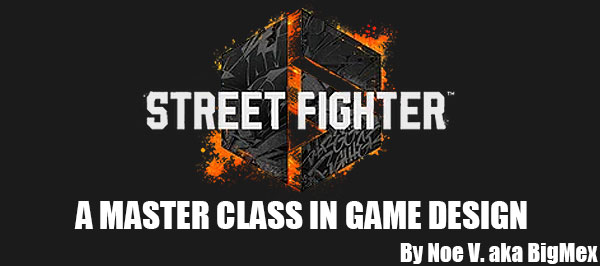
In Street Fighter 6 the entire map of Metro City was not open at first. This was done for several reasons. The developers wanted to pace out the game play. They wanted players to absorb the world they were being placed into. To see how the story was developing. Chapters were being unveiled in a very deliberate fashion. Missions were scattered across the town to force audiences to learn how to navigate the various side streets, and study the environment. The developers were using all the tricks at their disposal in order to force audiences to focus on specific things. Along the way you were being introduced to both classic SF characters, and entirely new faces. The developers wanted to give audiences the idea that they were an important member of this world, and not just a visitor.
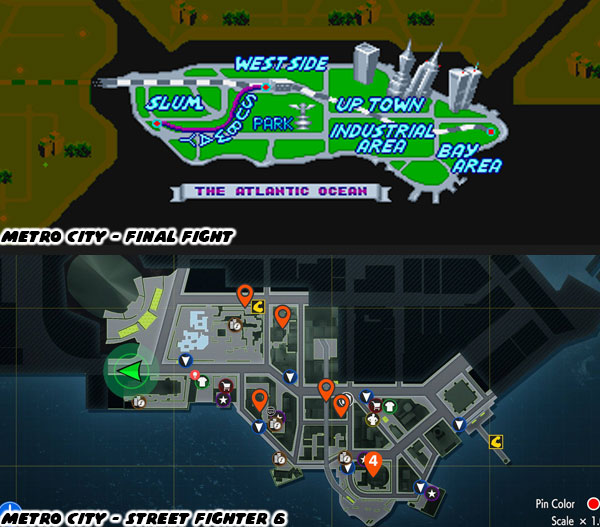
Clues to different plot points were scattered along the journey. Metro City was created out of thousands of tiny, easily overlooked details. It was up to the player to figure out the layout. To see which areas were safe to visit during the daytime, but might become sketchy at night. For example you could see a concentration of Mad Gear members behind a high chain link fence. Some were dancing, some were playing basketball, or just hanging out. Some were just waiting for a fight. It was up to you to decide whether or not you had the skill, or courage, to walk down a dark alley, and face all of those gang members. Or if it was a place that you might visit after leveling up.
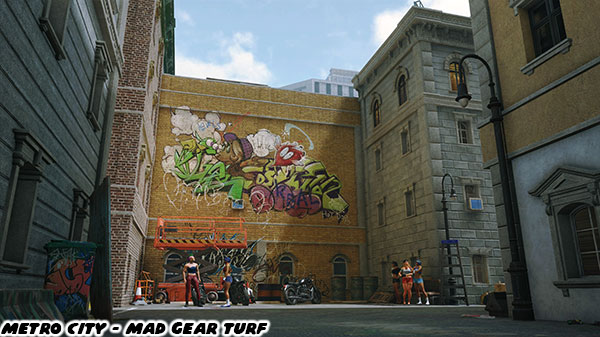
As the map expanded you discovered that Mad Gear wasn’t the only gang that had carved out their own turf. A new gang called the Crows has been steadily expanding as well. Visiting their area was not something that low-level players could do. You had to meet some criteria, and make allies with other NPCs before you could even get your foot through the front gate. The SF6 art team was able to make gang turf feel imposing, even without gang members waiting for you. They layered tags, and graffiti on the walls to make this part of the city look old, and neglected. They made the location feel isolated, by using alleys, and high walls to block out the view of the rest of the city. The deeper you went into their side of town, the more difficult the battles would become. It was one of those places where if you disappeared you wouldn’t expect the cops to come looking for you.
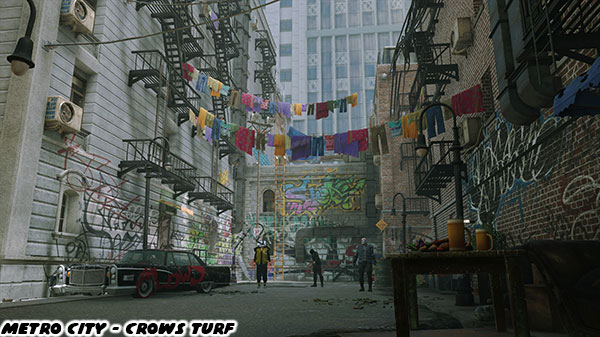
The developers weren’t just fleshing out gang-controlled parts of the city, but adding landmarks that would become central to the plot of the World Tour. These were places that were safe to visit at any time. One of the most impressive additions to Metro City was a cornerstone of the financial district. The Masters Foundation (as in Ken Masters) had a gorgeous skyscraper right next to the Grace Marina. The architecture for the various buildings were distinct. None of them looked as important as the Masters Building. It was layered with the reliefs carved out of stone, iron, and gold. The classic lines reflected the Art Deco style, similar to the Empire State Building, and Chrysler Building in NYC. The top of the building was very distinct. It looked like a castle, adding a regal element to the already elegant skyscraper.
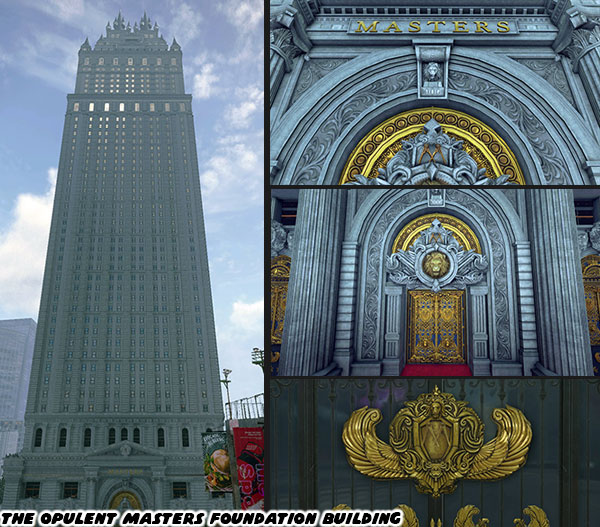
A lion bust was used on the archways, and doors of the Masters Building in order to represent power. The Masters logo itself was quite unique. The monogram “M” was made up of two compasses. This was done very deliberately. The
Freemasons were a centuries-old organization that was connected to money, and power all around the world. They existed before the founding of the US. The group designed, and built a number of the Washington D.C. buildings, and monuments. Several US Presidents were also members of the Masonic order. They had temples, and lodges around the country where they performed secretive rituals. On those buildings you could find the traditional symbols of masonry; the compass, and square. These items had a meaning according to Duncan's Masonic Monitor of 1866; "The square, to square our actions; The compasses, to circumscribe and keep us within bounds with all mankind.” By using familiar symbols Capcom was inferring that the members of the Masters family were not only wealthy, but well connected in society, and politics. These details would come into play through the events of the story.
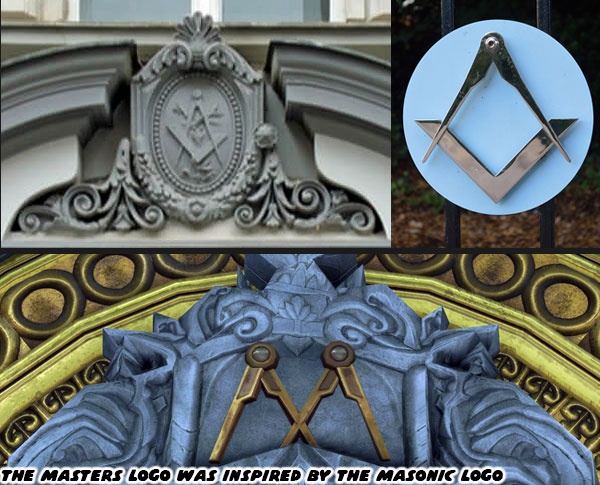
The developers included nods to earlier games in the franchise. They added these details more than just for the sake of hiding an Easter egg, but rather to establish a certain level of narrative consistency. The game did not have any throwaway details, but instead had carefully constructed elements that honored the legacy of earlier teams. An example of this was the inclusion of Ken’s yacht. The flashy boat, featuring a painting of himself, and his wife Eliza was previously seen in Street Fighter III. This was about 25 years prior. It wasn’t necessarily something that new players would know, or even care about. It did however spell out that Ken had money, and was a showoff with it. The docks themselves weren’t just for any random ships in Metro City either.The Grace Marina was dedicated to Ken Masters. His family, and his money had shaped the city. The combination of who Ken was, and the importance he had in the SF universe was amplified with these supporting details.
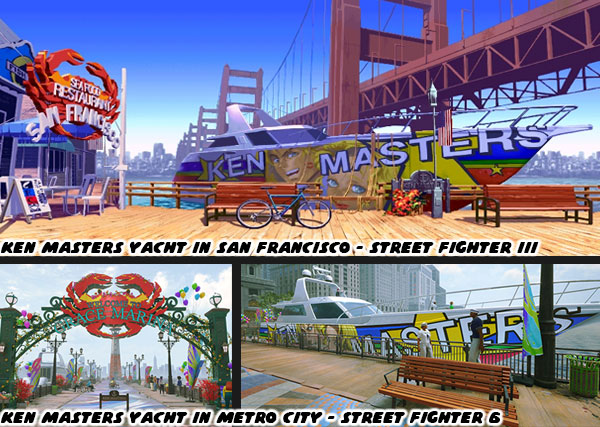
The details added into the canon of Metro City were done with forethought by the SF6 developers. Ken had been a star character in the franchise. He had consistently been one of the most popular fighters since the very first game. He traveled the globe like his best friend, and rival Ryu. Arguably Ken might be considered the better of the two martial artists. A side plot in the World Tour was having Ken abandon his position on the board of the Masters Foundation, avoid all tournaments, and go into hiding. He was even avoiding his family during this period. It was a shock to long time fans, and something that new players would learn about. Audiences that were new to the game were not told the plot, but shown it through different character interactions. Everyone that spoke about Ken said kind things about him. How well respected he was, what a tremendous fighter he was, what a loving family man he was. When you finally found out where he was hiding just about everything you heard about him seemed true. Ken was humble, but troubled by the accusations that were being leveled on him, and the Masters Foundation. He was willing to teach you his moves because he could see that you were as determined as he was at a young age.
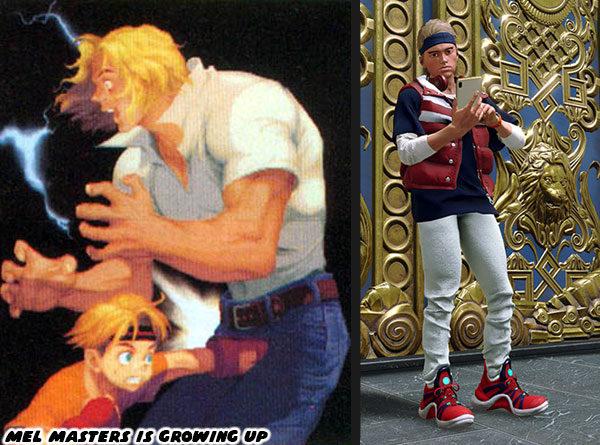
As the game progressed you discovered that a bombing happened during a tournament on the other side of the world. Ken was in attendance, and was implicated in the plot. He fought Luke whose company was working security at the time. Ken managed to get away, resign from his position with the Foundation, and went into hiding. You were trusted to keep Ken’s location a secret until he could clear his name. As the game progressed you caught a glimpse of Mel Masters, Ken’s son. He was waiting outside of the Masters Building, trying to get his father on the phone. He understood that Ken had a reason for going into hiding, but was hoping to contact his father. It was heartwarming to see how much he had grown since his appearance in SFIII. It was also heartbreaking that you couldn’t tell him where his father had gone. I had no idea that the subplots in the game would be tied together with the main plot. Again, the developers working on SF6 were not putting locations, and NPC encounters without some forethought. As I stated in the very first blog in the series this was a master class in game design. In the next blog I will talk about how a single stage in the original Final Fight helped connect Metro City to the future of the franchise. I hope to see you back for that. If you are a long time fan of Final Fight, or Street Fighter then I would like to hear your impressions of SF6. If you have never played any game previously then tell me your experiences in the comments section please. As always if you would like to sponsor me
please visit my Patreon page and consider donating each month, even as little as $1 would help make better blogs and even podcasts!
















No comments:
Post a Comment